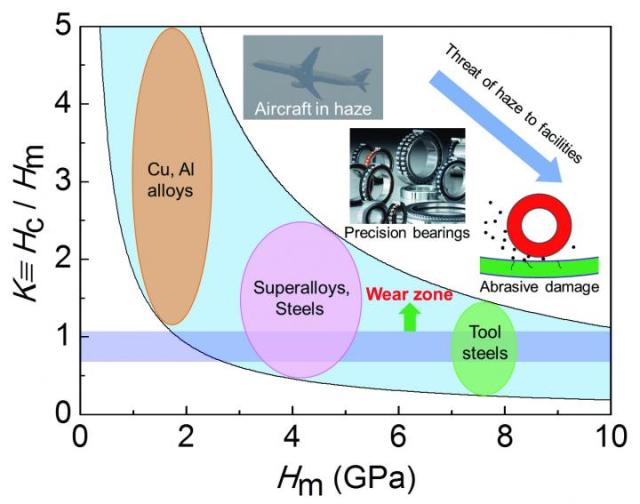The mechanical properties of haze particles have been successfully quantified. Researchers discovered that small amounts of the particles, when embedded in the precision parts of equipment and aircraft, have sufficient strength to damage machinery.
 Critical criterion for haze particles to generate abrasive damage to alloys. Credit: ©Science China Press
Critical criterion for haze particles to generate abrasive damage to alloys. Credit: ©Science China Press
Haze is a particulate form of air pollution that is a symptom of rapid urbanization and economic development. Haze can affect climate, visibility and human health, meaning it has raised great concern globally. Recently, significant efforts have been undertaken to study the physical and chemical properties of haze particles. However, as haze particles are tiny in size not much effort has gone into studing their mechanical properties.
Prof. Zhiwei Shan's research team successfully collected samples of haze. They then used an advanced in situ micromechanical testing system to study the mechanical properties of haze particles. The team showed that even a small fraction of haze particles possessed a compressive strength that was sufficiently high enough to create abrasive damage on commonly used industrial alloys. If haze particles are able to get into the gaps of gears, pistons or other precision parts they would be able to cause abrasive damage that decreases the service life of such parts.
Considering the heavy air pollution currently running rampant in developing countries, our findings suggest that appropriate preventive measures should be taken immediately to guard against the potential damage from haze, such as to assemble the precision parts in clean room, to seal the gap between sliding parts and to add special filter for air 'breathing' engines
Prof. Zhiwei Shan - Xi'an Jiatong University